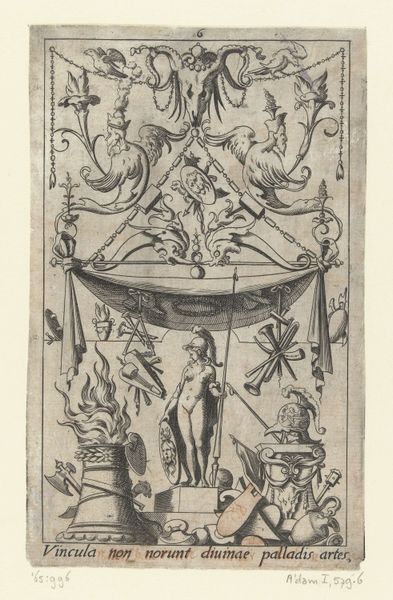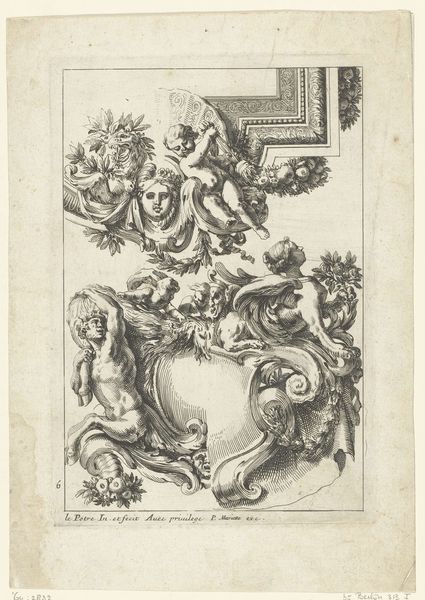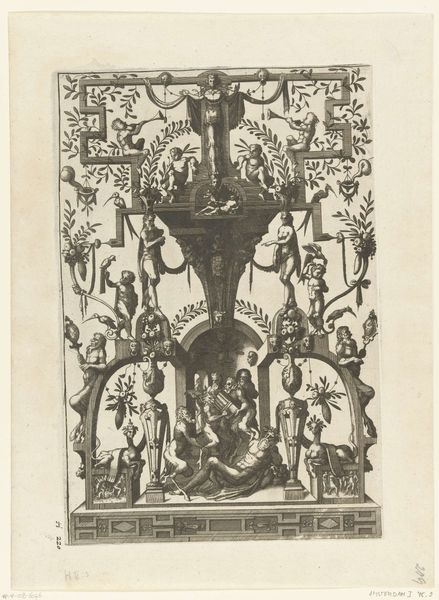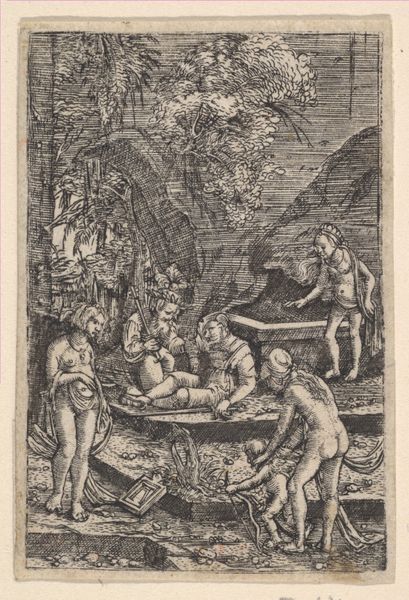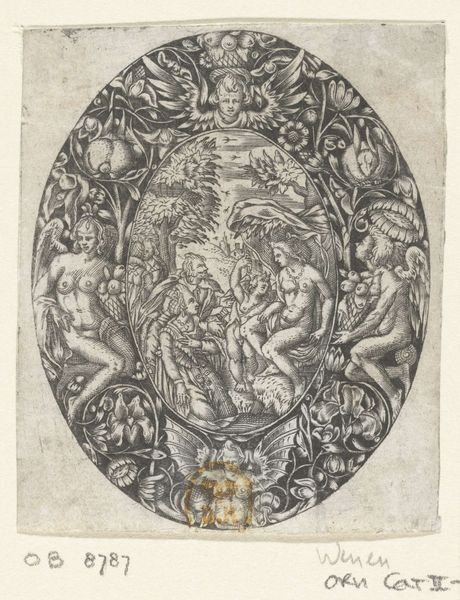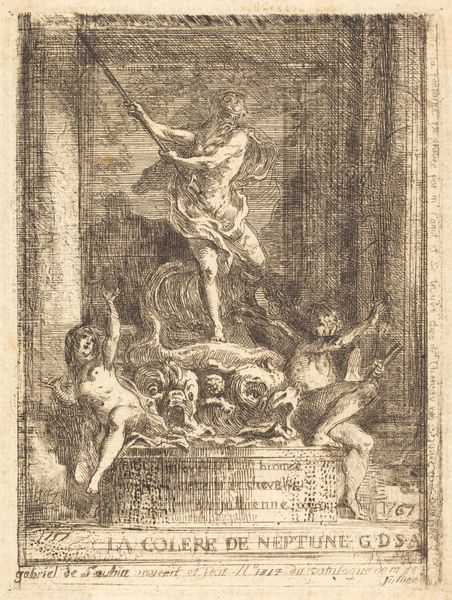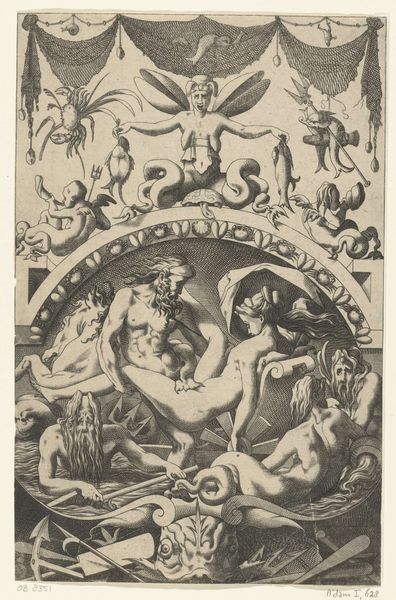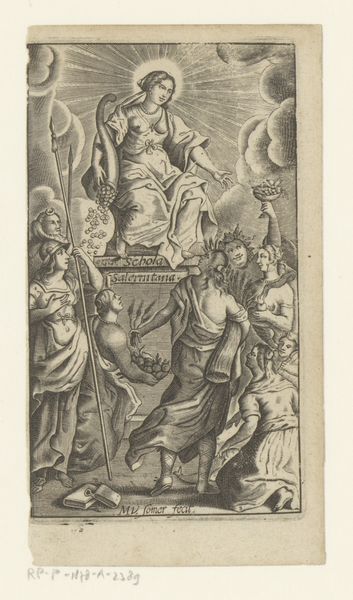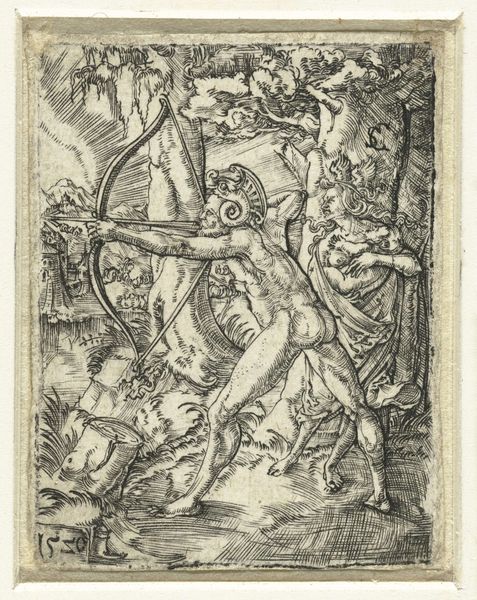
drawing, ink
#
drawing
#
ink painting
#
landscape
#
figuration
#
11_renaissance
#
ink
#
history-painting
#
italian-renaissance
Dimensions: maximum, corners cut to octagonal shape: 10 3/4 × 7 1/4 in. (27.3 × 18.4 cm)
Copyright: Public Domain
Curator: Here we have Giovanni Guerra's "A Fountain in a Grotto," an ink drawing created sometime between 1593 and 1603. What strikes you initially? Editor: The tonal range is quite striking; the use of sepia ink lends a certain earthiness to the fantastical subject. Curator: Indeed. Note the overall composition; the arch is cleverly employed as a framing device for the central scene, an artificial grotto featuring human figures surrounded by dense ornamentation. Editor: Right, and look how the profusion of symbolic objects around the grotto walls – weaponry, books, scientific instruments – act as visual commentaries. This is a fascinating confluence of power and erudition presented as ornament. Are we meant to understand the commissioner of this grotto, perhaps a patron of the arts or science, in relation to these carefully curated objects? Curator: Precisely! This imagery speaks volumes about the intersection of intellectual and political power during the late Renaissance. Consider also how the medium, a brown ink drawing, affects its historical reception. The linear precision defines forms with an incisive quality characteristic of mannerist art. Editor: It's the central grouping of figures that I find most intriguing. They seem less idealized than one might expect from the Italian Renaissance. Is it an allegory? Is it a classical subject rendered with unidealized bodies? Curator: Its iconography remains somewhat of a mystery, though its dramatic sensibility aligns with trends in Mannerism, rejecting perfect balance for expressive intensity. The grotto itself becomes a stage, filled with a cast of both living beings and symbolic, decorative elements. Editor: Yes, the stage is quite densely filled. The drawing invites close study—rewarding scrutiny as it presents symbolic programs within the context of patronage. The political and social forces at play, even just suggested here, demand contemplation. Curator: Ultimately, Guerra gives us an intriguing glimpse into the complex web of visual messaging and societal ideals that were important in his time.
Comments
No comments
Be the first to comment and join the conversation on the ultimate creative platform.

